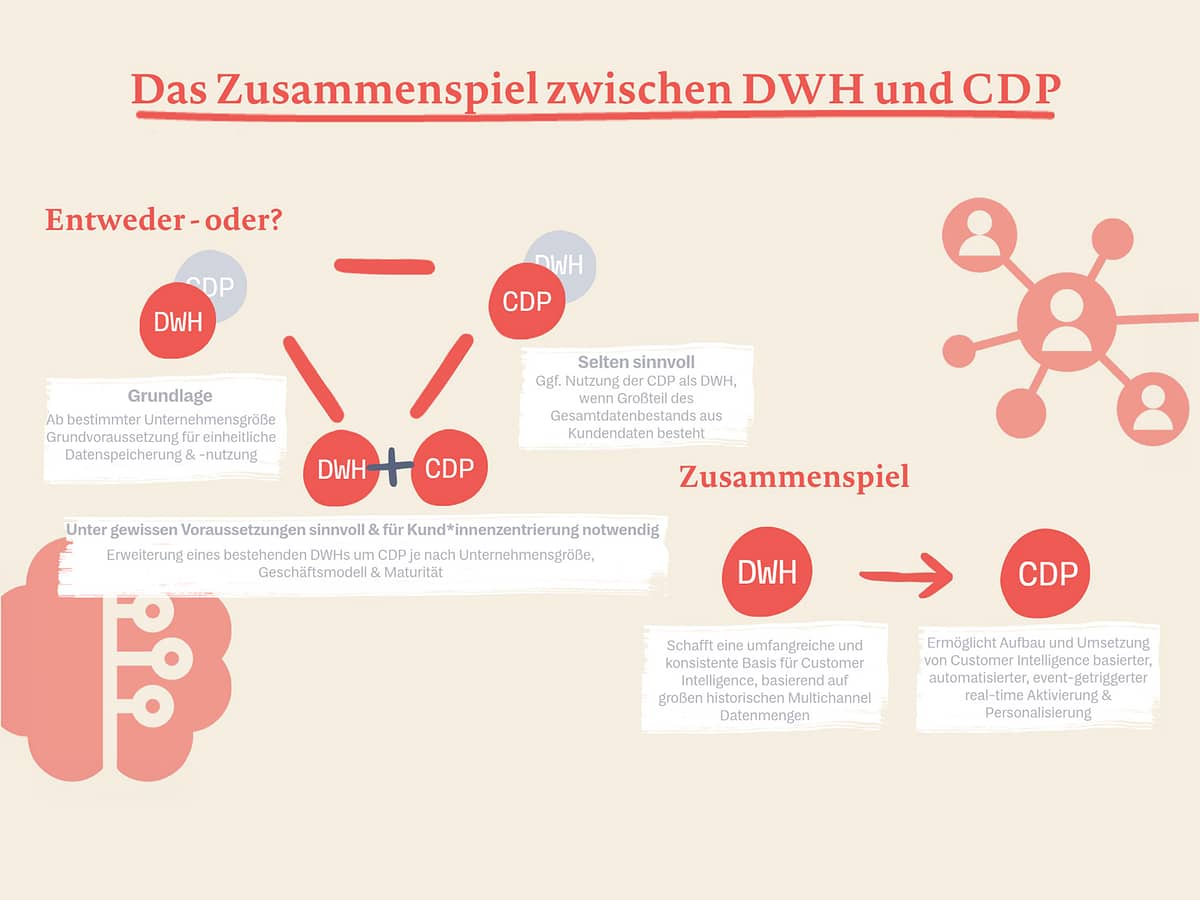Rethinking Customer Relationships
Data Strategy meets Technology and Psychology: The Era of Relationship Commerce
Say “Goodbye” to E‑Commerce and “Hello” to R‑Commerce – the future of digital marketing and sales! It’s time for a new mindset for the digital business: intelligent, dynamic, relationship-oriented. Time for “R(elationship)-Commerce.
The harsh reality
Why can’t we continue to do digital marketing the way we’ve always done it?

Technology
The End of 3rd-Party Cookies
Google Chrome, as the last browser, will soon cease support for third-party cookies. This marks the end of current tracking options and bids farewell to significant areas of modern marketing, including re-targeting. As a result, companies must find innovative ways to engage existing and potentially new customers effectively with meaningful content.

Regulation
GDPR, TTDSG, and More
The legal requirements, especially through GDPR and TTDSG, increasingly restrict options for data collection, processing, and storage. Therefore, the need to implement technical solutions that counteract data loss while improving the quality of the remaining data is growing

Consumer Behavior
Privacy Awareness is Increasing
For years, customers have been increasingly informed and have a growing awareness of data privacy. Many now use ad blockers or tools to delete browser data. This creates a paradoxical situation for companies: on one hand, the desire for personalized user experiences, and on the other hand, a decreasing willingness to share the data required for them.
Flight forward:
The transformation into a relationship-oriented company saves long-term success.
Our promise
The long-held dream of the 360-degree view of customers becomes a reality. For effective, positive, and sustainable customer relationships, we are finally breaking down the silos between data, technology, and marketing.
Data Strategy
High-quality, relevant, customer-centric, and cross-channel data foundation
Technology
Scalable, real-time capable architecture organized around centrally orchestrated customer data
Psychology
Behavioral design as the basis for needs-based and trust-building customer experiences
The 5 Paradigms
What defines Relationship Commerce?
True Customer-Centricity
Decisions are crucial for a company’s success, so it’s essential to accurately capture their development process — this is where data-driven ‘customer-centricity’ comes in to establish a solid foundation for relationships.
Data-Driven Actions
Fully harness the potential of data analysis and create effective, value-added solutions — without intelligent data utilization, there is no increased relevance in customer communication.
Moment-Driven Dialogue
Standardized customer journeys are a thing of the past. They are now dynamic and tailored to specific touchpoints. Moment-Driven Marketing enables personalized communication that aligns with real-time needs.
Sustainability
Relationships require trust to develop over the long term and sustainably. This promotes higher efficiency, improved data privacy, knowledge building, innovation, and the realization of revenue potential.
Privacy first
Companies can build trust with customers by handling collected data respectfully and according to their needs, reducing skepticism, with privacy being the top priority
Services in Detail
Relationship Commerce as a Strategic Transformation
- Organization & Processes
-
True customer-centricity requires an organization that not only enables it but actively promotes it. Instead of a siloed approach and individual handling of functions, cross-functional collaboration throughout the entire customer journey takes center stage. The focus is always on improving customer relationships. Agility and team autonomy are essential to quickly respond to changing customer needs and environmental factors.
- Systems & Tools
-
Modern, relationship-centered marketing is inconceivable without the use of technology. However, the challenge lies in the increasingly complex landscape of systems and tools. To ensure a holistic, unified, and real-time view of your customers, careful selection of suitable tools and their seamless integration is essential.
- Data & Analytics
-
Systems and tools provide the technical foundation, but the existing data still needs to be organized, analyzed, understood, and contextualized. This is where Customer Intelligence comes into play: it involves generating deep insights into your customer base, segmenting it into different customer groups, and using these insights for targeted customer engagement.
- Trust Architecture
-
Even a state-of-the-art technology stack and scalable real-time data, along with clearly defined customer segments, do not on their own create a sustainable customer relationship. The key here is trust. Trust architecture systematically and needs-based utilizes trust mechanisms along your individual customer journey to continuously justify, strengthen, and sustainably nurture the trust of your customers.
- Customer Activation through Behavioral Design
-
Every customer touchpoint — whether digital, analog, or at the point of sale — is the vehicle for the perceived experience and reflects the result of the interaction of all levels. This is where the customer relationship manifests itself. The personalized design of these touchpoints requires a deep understanding of human decision-making and behavioral patterns. Behavioral Design translates this understanding into UX measures that will delight your customers.
Unlocking genuine customer relationships with new data strategies. Find out how!
Let’s get down to business
Joachim, why is “Relationship-Commerce” more important than ever?
In the transformation from E‑Commerce to R(elationship)-Commerce, the combination of data and behavioral psychology is essential for building sustainable customer relationships.




